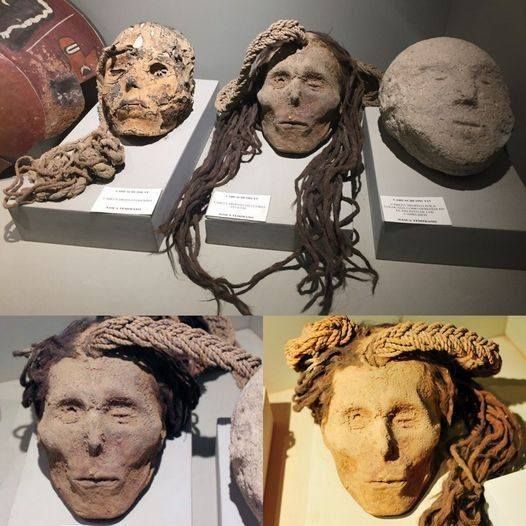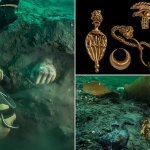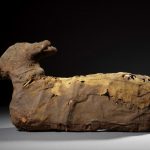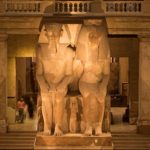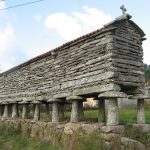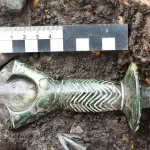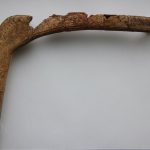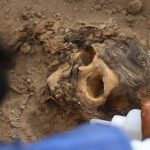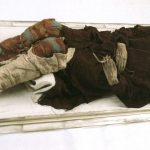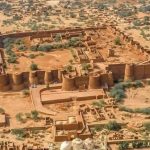Chilling Trophies of the Nazca Culture: 𝘚𝘬𝘶𝘭𝘭𝘴 𝘗𝘪𝘦𝘳𝘤𝘦𝘥 and Bound
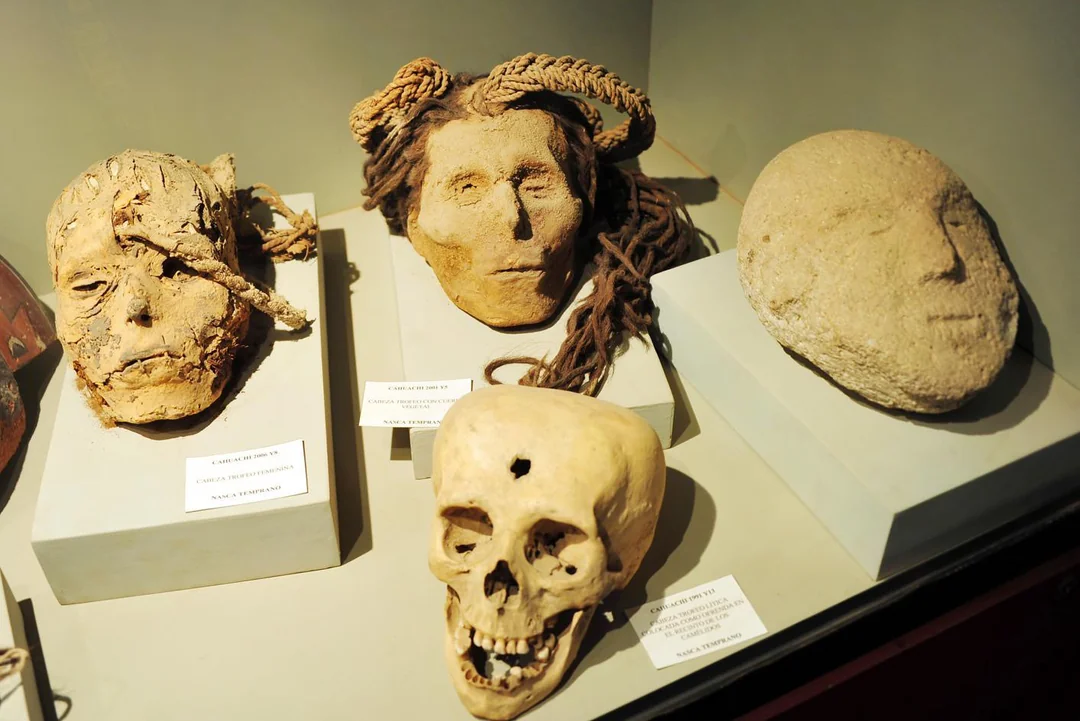
Among the most haunting and enigmatic relics of ancient Peru are the trophy skulls of the Nazca civilization (circa 100 BCE–800 CE). These skulls exhibit a distinctive feature—deliberately drilled holes in the forehead—through which cords were threaded, likely allowing the skulls to be carried or displayed during rituals.

Not merely war trophies, isotopic analyses (strontium, oxygen, carbon) of these skulls revealed that they belonged to local individuals, not enemies, suggesting that they may have originated from members of the same Nazca communities—possibly used in religious ceremonies, ancestral veneration, or fertility rituals.
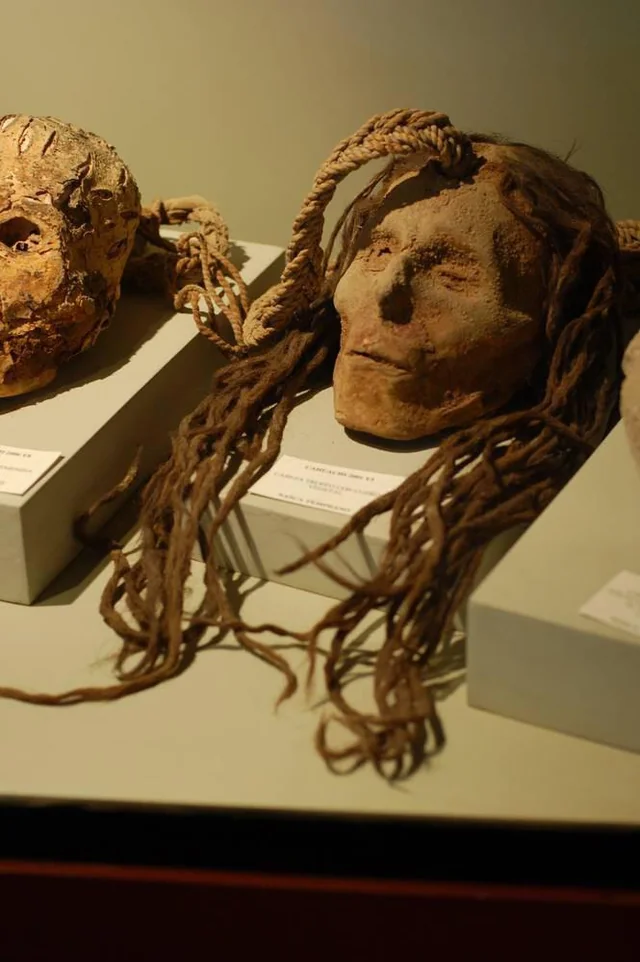
Some of these skulls also display additional modifications such as sewn lips using cactus spines, an apparent attempt at “spirit containment”.
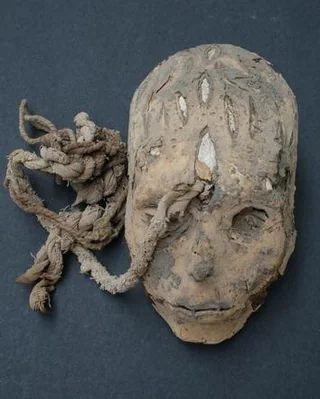
Moreover, many skulls exhibit signs of intentional cranial deformation—a practice of binding infants’ heads to achieve elongation, perhaps denoting social status, ethnic identity, or spiritual significance
